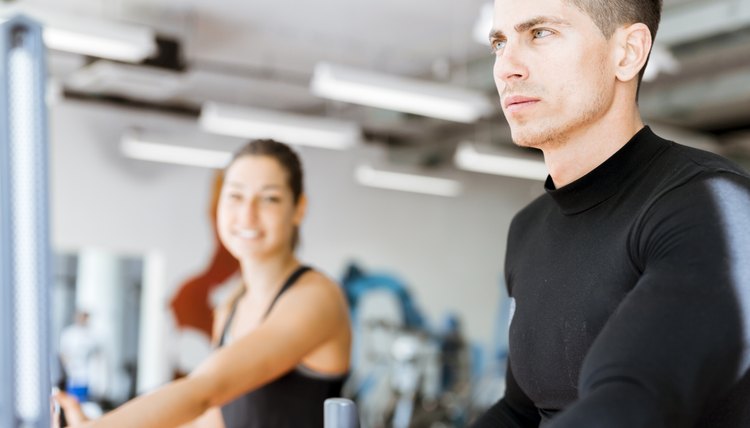What Is a Magnetic Treadmill?

A magnetic treadmill is a motorless treadmill that creates resistance by using magnetic force. By increasing or decreasing the magnetic pull, you can create a more challenging or less strenuous workout. Fans of this type of treadmill like it because it’s easy to store and maintain.
Types
There are three basic types of treadmills: motorized, hydraulic and magnetic. Both hydraulic and magnetic treadmills are powered by initiating forward movement to roll the belt forward. In contrast, a motor treadmill automatically advances depending on the speed at which you set it. A motor treadmill will force you to keep a consistent pace, whereas a magnetic or hydraulic treadmill is dependent upon your own willpower.
Considerations
Most magnetic treadmills are slightly inclined so as to make it easier to initiate the belt’s momentum, and getting started may take some practice. As a result, it may take some time to adjust to using this type of system, and the sensation while using it may feel different than an actual walk or jog. However, once you master it, a magnetic treadmill can provide a challenging and fulfilling workout.
Benefits
Magnetic treadmills offer many benefits. They are environmentally friendly and ecologically sound in that they don’t require any electricity to operate. They are also smaller, lighter and easier to store. The machine also makes less noise when operated and can be more convenient for apartments or cramped spaces. Plus, magnetic treadmills are usually significantly cheaper than motorized versions.
Warning
If you have knee, hip or joint pain or any pre-existing condition, be sure to check with your doctor before beginning a magnetic treadmill session or any other type of workout. Because the belt on a magnetic treadmill takes some force to initiate, it can be somewhat difficult to get started, and it could create strain on your joints or cause injury if your body is not strong enough to trigger or sustain the forward motion.
Safety
Treadmills should be used on a flat and level surface and be positioned where you have a minimum of 2 feet of space surrounding it. Periodically check all the nuts and bolts and snug any that may have come loose. Avoid wearing loose or dangling clothing that could get caught up in the machine. Keep children and pets away from the machine when it is in use. If you hear any unusual noises coming from the machine, stop immediately and avoid using the machine until the problem has been fixed.
Writer Bio
Based in San Diego, California, Jill Blessing has been writing since 1997. Her work has been published in "Triathlete" magazine, "CMYK" magazine, "Kansas City Homes & Gardens" magazine and "The Columbia Missourian." She holds a bachelor's degree in journalism from the University of Missouri.
